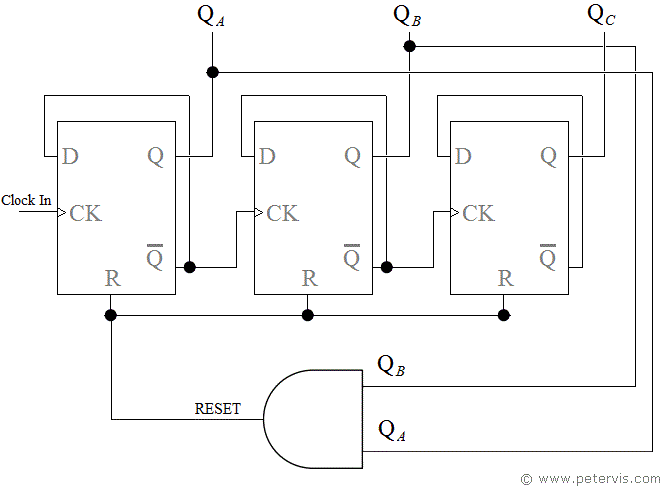Test: Number Systems, Boolean Algebra & Sequential Logic Circuits - Electronics and Communication Engineering (ECE) MCQ
20 Questions MCQ Test GATE ECE (Electronics) Mock Test Series 2025 - Test: Number Systems, Boolean Algebra & Sequential Logic Circuits
To perform product of maxterms Boolean function must be brought into
If (211)x = (152)8 , then the value of base x is
11001, 1001 and 111001 correspond to the 2’s complement representation of the following set of numbers
A signed integer has been stored in a byte using 2’s complement format. We wish to store the same integer in 16-bit word. We should copy the original byte to the less significant byte of the word and fill the more significant byte with
A computer has the following negative numbers stored in binary form as shown. The wrongly stored number is
The circuit shown in fig. is

The counter shown in fig. is
The counter shown in fig. counts from
The mod-number of the asynchronous counter shown in fig. is
The frequency of the pulse at z in the network shown in fig. is
The three-stage Johnson counter as shown in fig. is clocked at a constant frequency of fc from the starting state of Q2 Q1Q0 = 101. The frequency of output Q2 Q1Q0 will be
The counter shown in the fig. has initially Q2Q1Q0 = 000. The status of Q2 Q1Q0 after the first pulse is
A 4 bit ripple counter and a 4 bit synchronous counter are made by flips flops having a propagation delay of 10 ns each. If the worst case delay in the ripple counter and the synchronous counter be R and S respectively, then
A 4 bit modulo–6 ripple counter uses JK flip-flop. If the propagation delay of each FF is 50 ns, the maximum clock frequency that can be used is equal to
The initial contents of the 4-bit serial-in-parallel-out right-shift, register shown in fig. is 0 1 1 0. After three clock pulses are applied, the contents of the shift register will be
Consider the signed binary number A = 01010110 and B = 1110 1100 where B is the 1’s complement and MSB is the sign bit. In list-I operation is given, and in list-II resultant binary number is given.
The correct match is
The simplified form of a logic function
If the decimal number is a fraction then its binary equivalent is obtained by ________ the number continuously by 2.
The Boolean equation X = [(A + B̅) (B + C)] B can be simplified to
|
25 docs|263 tests
|




















